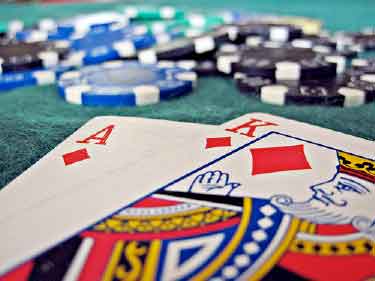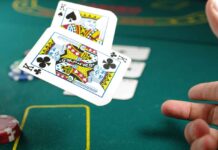Online blackjack challenges long-practiced methods that once gave players an advantage in casinos. Physical tables demanded sharp observation and rapid arithmetic, and counters built their strategies around visible decks and deliberate shuffles.
Today’s digital interface erases many familiar cues while introducing a new pace and style. Computers generate outcomes with rapid shuffling routines that reset conditions almost instantaneously.
Enthusiasts of card counting face a transformed environment where the rhythm of play calls for fast mental adjustments and fresh techniques. Many players test their skills on demo tables and simulated games, searching for ways to recapture a statistical edge in an arena where every hand appears as an independent event. The discussion that follows offers insight into the evolution of counting methods, the technical hurdles of online blackjack, and accounts from players who have faced these challenges head-on. In this space, ideas collide with real-world experiments that reveal both the potential and the limitations of digital card counting.
Evolution of Card Counting Techniques in Traditional and Virtual Play
Physical casinos offered a setting where players relied on practiced memory and rapid arithmetic to track cards. Counters confidently applied systems like the Hi-Lo method as each card passed their eyes. The tactile experience at a table provided a slow, deliberate pace that allowed focused tracking of high and low cards. Players honed their abilities through repeated practice and careful observation of human dealer actions. In these venues, the physical presence of cards and the predictable order of shuffles created an environment where the experience visibly paid off.
Digital platforms changed this landscape dramatically. Software shuffles multiple decks quickly, and each hand appears freshly randomized. Counters adjust their methods by relying on memory and swift mental calculations in the blink of an eye.
A player once compared his challenge to deciphering a complex code that resets before the next symbol appears. The situation resembles a musician suddenly handed a new score in the middle of a performance, forcing improvisation and on-the-fly adjustments. Individuals in online communities share accounts of their experiments. One participant described spending long sessions on simulation games, methodically tracking card distributions only to find that software routines reset his progress with rapid shuffles.
Counters adapt their practice routines by engaging with digital simulators that replicate the pace of online play. Training resembles an athlete preparing for a sprint with sudden bursts of energy, where each hand tests mental speed and concentration. Many players revise counting systems, modifying their approaches to account for the high-speed resets that digital games demand. Enthusiasts discuss how they apply traditional methods and then adjust their arithmetic on screens where no physical dealer distributes cards.
The evolution of counting techniques now thrives on constant adaptation, creative problem-solving, and persistent practice. Players challenge themselves to keep pace with software algorithms, treating every hand like a test of both skill and reflex, much like a chef perfects a recipe through repeated experimentation and fine-tuning.
Technical Challenges and Adjustments in Online Blackjack
Digital blackjack confronts players with obstacles that differ sharply from traditional gaming floors. Software shuffles cards rapidly, resetting conditions after every hand and limiting opportunities for sustained tracking. Counters work hard to maintain mental calculations amid a barrage of fast results. Each hand demands instant analysis, and players feel the pressure to compute quickly before the next deal begins. One counter likened the experience to racing against a stopwatch in a rapidly changing environment, where each tick forces immediate decision-making.
Online systems frequently use multiple decks and automatic shuffling routines that disguise any lingering patterns. The challenge resembles reading a continuous stream of random numbers without the benefit of physical cues. When a game resets after each hand, the connection between successive outcomes disappears. A counter compared this obstacle to a chess match in which the board resets after every move, requiring new strategies each time. Players sometimes turn to practice software replicating the rapid shuffle, treating each session as a series of split-second puzzles demanding focus and mental agility.
The absence of human dealers removes many subtle hints that traditional play offers. Without visible shuffles or deliberate card handling, counters lose indicators that previously guided their calculations.
Players now rely solely on mental strategies honed through hours of practice. Technical settings often force a reshuffle after only a few hands, limiting the chance to build a statistical advantage over time. A counter described the process as trying to assemble a puzzle where the pieces vanish immediately after placement, leaving only a fleeting glimpse of a pattern. Software measures designed to maintain fairness actively interrupt any attempt to accumulate long-term advantage. Players face an environment where each hand stands alone, and the mental load increases as they compute rapid sequences in a digital flash. Every session challenges their ability to adapt, recalibrate, and operate under a constant digital reset, turning the game into a series of fast, isolated contests of mental prowess.
Real-World Experiences and Future Prospects of Digital Card Counting
Players report experiences that shed light on the realities of counting in online blackjack. Many recount rigorous attempts to apply familiar techniques in a digital setting, testing their skills on demo games and live tables alike. One counter compared his efforts to operating a stopwatch in a busy race; each hand passed by in a burst of activity that demanded an immediate response. The intensity of play leaves little room for error, and many find that success comes only after long hours of focused practice.
Communities of enthusiasts share detailed accounts of wins and setbacks in the best real money blackjack online platforms.
Several players describe moments when a short winning streak gave way to an abrupt reset by the game software. One experienced counter spoke of the excitement when a session briefly mirrored the conditions of a physical table before digital routines erased his progress. Others recall long nights spent analyzing game logs and testing different mental approaches on simulation programs. These narratives offer a glimpse into a world where counters treat each hand as a lesson, much like a scientist collects data during experiments to improve a formula. A player described his routine as sculpting a block of stone—each swing of mental calculation gradually revealed a finer strategy, even though the medium continually shifted.
A growing number of individuals invest in mental training programs designed to simulate rapid shuffling and constant resets. Some even participate in group sessions where they exchange techniques and test theories in controlled environments.
These real-world experiences serve as a foundation for future prospects. The promise lies in the potential to refine counting methods that work within the constraints imposed by online systems. The drive to innovate mirrors that of a dedicated researcher who continually adapts his approach based on each new set of results. Players look forward to developments that may offer clearer patterns or more stable conditions, though software safeguards and rapid resets remain persistent obstacles. The pursuit of a viable strategy in digital blackjack continues as counters push the limits of memory and speed, applying lessons learned from every session to improve their performance in a game where every hand represents a fresh test of mental agility.







